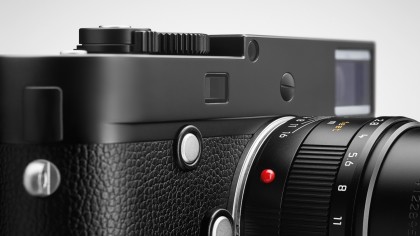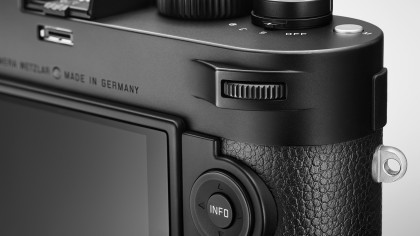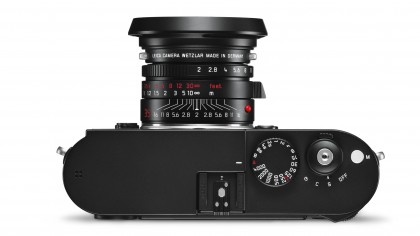Why you can trust TechRadar
As much as Leica M cameras are designed to be portable and discrete, the M Monochrom (Type 246) is a pretty hefty and solid camera. Its whole top deck above the area covered in leather is milled from a single solid lump of brass, as is the base plate. The rest of the body is made from magnesium alloy, and while that is a lightweight metal its gravity-defying properties do little to offset the mass top and bottom. The camera does immediately feel extremely nice, and as though its handmade body and dials will never wear out.

The M cameras have a minimalist design that for the Monochrom includes only 11 buttons across the whole surface – including the shutter release. The only dial is an analogue-style shutter speed dial, and there are only six access buttons beside the LCD. The rear controls are quite different from the previous Monochrom with a four-way rocker around the Info button and a new rear thumb wheel to drive speedy navigation through menus and to magnify images in review mode.
Also new for this incarnation of the black and white M is a front-mounted exposure compensation button. Although finding, pressing and then using the rear thumb wheel while the button is held in isn't quite as easy as I'd like it to be, the set-up is a good deal more convenient than the previous arrangement. Alternatively there is an option in the 'Set' menu to set exposure compensation via the rear dial, which is more convenient still.

Being quite heavy and smooth, the camera isn't especially easy to hold unless you grip it in the shooting position. You might find this uncomfortable at first, but will be rewarded with the fact that your finger positions will mean you are always ready to shoot. With your hands in the shooting position you'll find all the controls you need fall just where you would expect them to be. The aperture ring of Leica lenses sits near the end of the barrel where the thumb and index finger can take control, while the focusing knob sits closer to the body where the middle finger can slide it back and forth to bring the rangefinder into alignment.
The bright viewfinder provides a double-image rangefinder with guidelines for the lens in use – so you can compose and focus at the same time. Six focal lengths are represented by the frame guides, and are shown in pairs: 35mm and 135mm, 28mm and 90mm, 50mm and 75mm. Other focal lengths can be used on the camera, but composition will need to be carried out via the live view screen – which shows a 100% view of what will be captured by the sensor. I have suddenly got to a stage where I need to wear glasses when looking through a camera – but still found the view clear, full and simple to understand.

There isn't too much information in the viewfinder, so you have to keep track of the position of the aperture ring. In aperture priority mode you are kept informed of the shutter speed in use, but in manual mode you just get told you are under or over exposing – though not by how much.
The menu system is really pretty straightforward. Leica doesn't pile on the options, features and modes, and while there are plenty of menu streams they are layout simply and in a way that everything can be found very quickly. As you would expect, the menu items are in black and white too – but light up red when selected.
Sign up for breaking news, reviews, opinion, top tech deals, and more.
Shooting in raw and JPEG mode simultaneously can create some delays while the camera processes the images, but conversely makes image review scrolling quicker. With the uncompressed DNG files being compatible with just about every raw image software package, there isn't too much need to record JPEGs – unless you want to use the in-camera colour toning – so most people will shoot DNG-only and bypass the extended processing.
